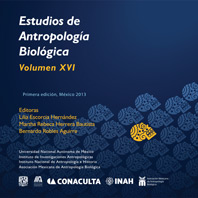Perforated skulls from two prehispanic sites in the mesoamerican border. Cerro del Hustle, Jalisco an La Quemada, Zacatecas. A comparative analysis
DOI:
https://doi.org/10.22201/iia.14055066p.2013.56690Keywords:
taphonomic alterations, tzompantli, cranial perforationsAbstract
In ancient Mexico, the practice of taking human body segments and expose specific structures was developed by various ethnic groups throughout the Mexican territory and from periods rather old. The best known example is the tzompantli, a term that can refer both to the type of construction where they placed the heads of some sacrificed and to the skulls themselves. Such structures have been found in several sites in Mesoamerica, however, the skulls themselves are scarce. The fact that the tzompantli is the best known form of exposure of human body segments, has generated confusion to believe that any skull that has some type of drilling belongs to a tzompantli, thought that is not always the case. In this paper, we review two cases in the north central region of our country, in whose archaeological sites human skulls with intentional drilling were found. It addresses their archaeological contexts, as well as the characteristics of cultural taphonomic alterations present in them. The purpose is to establish, among these cases, similarities and differences that may help the understanding of the meaning of this cultural practice.
Downloads
Downloads
Published
How to Cite
Issue
Section
License

http://creativecommons.org/licenses/by-nc-nd/4.0/


